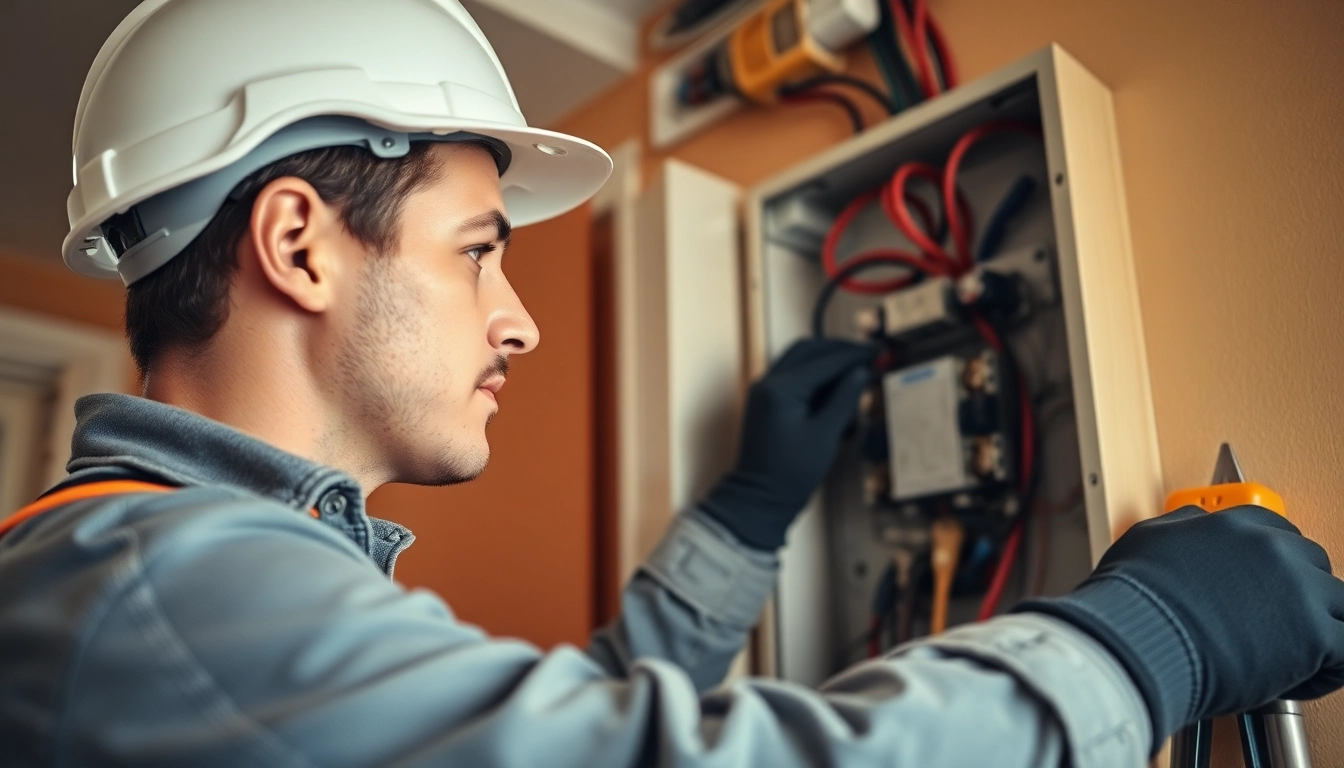Reliable Electrical Service: Ensuring Safety and Efficiency in Your Home
Understanding Electrical Service Essentials
Electrical service forms the backbone of any modern infrastructure, powering homes, offices, and various industries. It encompasses everything from the power grid supply to the electrical systems that deliver electricity to different devices and applications. Understanding the fundamentals of Electrical Service is crucial for homeowners, businesses, and anyone interested in ensuring their electrical systems are safe, efficient, and reliable. This article delves into the essential components, evaluation methods, and professional help required to maintain optimal electrical service.
What is Electrical Service?
Electrical service refers to the overall system that delivers electrical power to a residence or business. This includes the delivery from the utility provider up to the electrical panel in your home. An electrical service encompasses several key components:
- Service Entry: This is the point where electricity enters your property from the utility provider. Proper installation and maintenance here are critical for overall safety.
- Service Panel: Often referred to as a circuit breaker panel, it distributes electricity throughout your home. It includes breakers or fuses that protect your circuits.
- Subpanels: In larger homes or properties, subpanels might be installed to manage additional load requirements.
- Wiring: This is the system of electrical conductors that connects all electrical devices and fixtures.
Components of Electrical Service
Each component of electrical service plays a crucial role in ensuring that the system operates effectively and safely. Here’s a deeper look at each component:
1. Service Entry
The service entry is where utility service providers connect to your home. It includes overhead or underground service lines and is connected to the weatherhead, which protects from electrical surges.
2. Circuit Breakers
Circuit breakers are designed to interrupt the electrical flow in case of faults, thereby preventing potential hazards. They act as switches that automatically turn off the current during an overload or short circuit, thus preventing fires and electrical shocks.
3. Grounding System
A grounding system connects electricity to the ground. It’s essential for safety as it helps to prevent voltage surges and ensures the system safely diverts excess electricity away from users.
4. Electrical Meters
Electric meters measure the electricity consumed in your home, allowing utility companies to calculate billing accurately. Understanding how to read your meter can help you monitor electricity usage, leading to potential savings on your utility bills.
Importance of Professional Installation
While some homeowners may attempt DIY electrical work to save on costs, professional installation is crucial for ensuring safety and compliance with local electrical codes. Trained electricians are knowledgeable about the latest regulations and safety standards, which significantly minimizes the risk of electrical hazards.
Identifying Your Electrical Service Needs
Knowing your electrical service needs is essential for maintaining a safe and efficient power supply. It involves evaluating your current setup and identifying deficiencies or potential upgrades.
Evaluating Your Electrical System
A complete evaluation of your electrical system involves several critical tasks:
- Inventory of Electrical Devices: Count and identify all devices, appliances, and systems to assess your energy needs.
- Age of Electrical System: Older systems may not handle modern loads effectively, requiring upgrades.
- Inspection for Damages: Check for signs of wear, such as frayed wires or flickering lights, which may indicate underlying issues that need attention.
Common Electrical Service Issues
Some typical issues homeowners face with electrical service include:
- Tripping Circuit Breakers: Frequent tripping can indicate overloaded circuits, defects, or malfunctioning equipment.
- Flickering Lights: This can reveal wiring issues, loose connections, or insufficient power supply.
- Burning Smell: Unusual smells could indicate burning insulation or wiring, signaling an emergency situation that must be addressed immediately.
Signs You Need Professional Help
Recognizing when to seek professional assistance is essential in maintaining a safe home. Key indicators include:
- Regularly tripping circuit breakers.
- Inconsistent power supply or flickering lights.
- Unexplained increase in electric bills.
- Reports of devices functioning improperly.
Choosing the Right Electrical Service Provider
The right electrician can make all the difference when it comes to your electrical service. Given the potential hazards associated with electrical work, selecting a qualified professional is paramount.
What to Look for in an Electrician
When seeking an electrical service provider, consider the following criteria:
- Licensing and Insurance: Ensure that your electrician is properly licensed and carries liability insurance to protect against damages.
- Experience: Look for electricians with considerable experience in the specific type of work you need.
- Specializations: Some electricians specialize in residential work, while others may focus on commercial or industrial applications. Choose one that aligns with your needs.
Comparing Quotes and Services
Obtaining multiple quotes can help you gauge average prices. Pay attention not just to the price but also to the scope of services provided. A lower price might indicate a lack of necessary services, while a high quote may include unnecessary ones.
Reading Reviews and Testimonials
Before hiring an electrician, check reviews and testimonials. Websites like Google and Yelp can provide insights into customer experiences, helping you make informed decisions.
Maximizing the Efficiency of Your Electrical Service
Maximizing your electrical service efficiency not only enhances comfort but also reduces costs associated with energy consumption. Understanding how to maintain and upgrade your systems can yield significant benefits for homeowners.
Regular Maintenance and Inspections
Regular inspections can help identify issues before they become costlier problems. Schedule a maintenance check at least once a year to ensure that:
- Wires are free from wear and damage.
- Breakers are functioning correctly.
- Grounding systems are effective.
Upgrading Your Electrical System
As technology evolves and energy needs increase, upgrading your electrical system becomes essential. Potential upgrades include:
- SERVICE PANEL: Upgrading your service panel can significantly increase your home’s capacity to manage electrical loads.
- WIRING: If your home is older, consider rewiring to accommodate modern demands safely.
- SMART TECHNOLOGIES: Incorporating smart devices can lead to more efficient energy usage, contributing to lower bills and enhanced convenience.
Energy-Saving Tips and Recommendations
Implementing energy-saving methods in your home can be as simple as:
- Switching to LED bulbs.
- Utilizing smart thermostats.
- Unplugging devices that are not in use to prevent phantom energy consumption.
Understanding Electrical Service Costs
Electrical service costs can vary widely based on a variety of factors. Understanding these will help you budget effectively for your electrical needs.
Factors Affecting Electrical Service Pricing
Several elements can influence the cost of electrical services:
- Scope of Work: More extensive work, such as re-wiring a home or upgrading a service panel, typically costs more than simple repairs.
- Labor Rates: The electrician’s experience and the local market rates can affect pricing.
- Materials: The quality and type of materials used will influence the total cost of electrical services.
How to Budget for Electrical Services
When budgeting for electrical services, consider creating an emergency fund for unexpected repairs while allocating a portion of your budget for upgrades and maintenance. Typical costs for electrical services can range anywhere from a few hundred dollars for simple installations to several thousand for more complex jobs.
Cost-Effective Solutions for Homeowners
Homeowners can explore various financing solutions to manage electrical service costs, including:
- Government Programs: Some local governments offer rebates for energy-efficient upgrades.
- Home Equity Loans: These can provide flexibility for larger projects that may not fit within your annual budget.
- Payment Plans: Many electrical service providers offer payment plans to help homeowners manage project costs.










